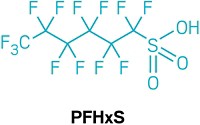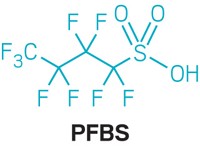Advertisement
Grab your lab coat. Let's get started
Welcome!
Welcome!
Create an account below to get 6 C&EN articles per month, receive newsletters and more - all free.
It seems this is your first time logging in online. Please enter the following information to continue.
As an ACS member you automatically get access to this site. All we need is few more details to create your reading experience.
Not you? Sign in with a different account.
Not you? Sign in with a different account.
ERROR 1
ERROR 1
ERROR 2
ERROR 2
ERROR 2
ERROR 2
ERROR 2
Password and Confirm password must match.
If you have an ACS member number, please enter it here so we can link this account to your membership. (optional)
ERROR 2
ACS values your privacy. By submitting your information, you are gaining access to C&EN and subscribing to our weekly newsletter. We use the information you provide to make your reading experience better, and we will never sell your data to third party members.
Persistent Pollutants
Governments agree to eliminate the PFAS chemical PFHxS
Toxic, persistent substance is found in human blood and drinking water supplies
by Cheryl Hogue
June 22, 2022
| A version of this story appeared in
Volume 100, Issue 23
Production and use of perfluorohexane sulfonic acid (PFHxS) and compounds related to it will be eliminated in most of the world under an international agreement completed in mid-June.

PFHxS, which is in the family of per- and polyfluoroalkyl substances (PFAS), has been widely detected in human blood and found in drinking water supplies. Exposure to the compound is associated with decreased thyroid hormone levels, adverse effects on development, and liver problems.
Countries that are partners to the Stockholm Convention on Persistent Organic Pollutants agreed June 17 to add PFHxS, its salts, and related compounds to a list of compounds they pledge to eliminate. They defined related compounds as “any substance that contains the chemical moiety C6F13SO2- as one of its structural elements and that potentially degrades to PFHxS.”
PFHxS, formerly made in the US by 3M, was used in firefighting foam, metal plating, and cleaning products, and to impart stain resistance to carpets, textiles, leather, and upholstery. It was also used in the manufacture of electronics and semiconductors. 3M phased out production of the molecule in 2002, but some facilities in China reportedly still make it, according to a document prepared for the Stockholm Convention partners.
The US is not a party to that pact because Congress has not passed legislation to implement the provisions of the accord. However, the US participates in Stockholm Convention negotiations as an observer.
PFHxS elimination “is an important step towards banning more of these toxic ‘forever chemicals’ that pollute the environment and humans all over the world, threatening the health of millions of people,” Sara Brosché, science advisor to the International Pollutants Elimination Network, says in a statement. “But the chemicals industry keeps replacing banned PFAS with different but equally harmful PFAS. That’s why there is an urgent need to ban all PFAS rather than addressing them one by one.”




Join the conversation
Contact the reporter
Submit a Letter to the Editor for publication
Engage with us on Twitter